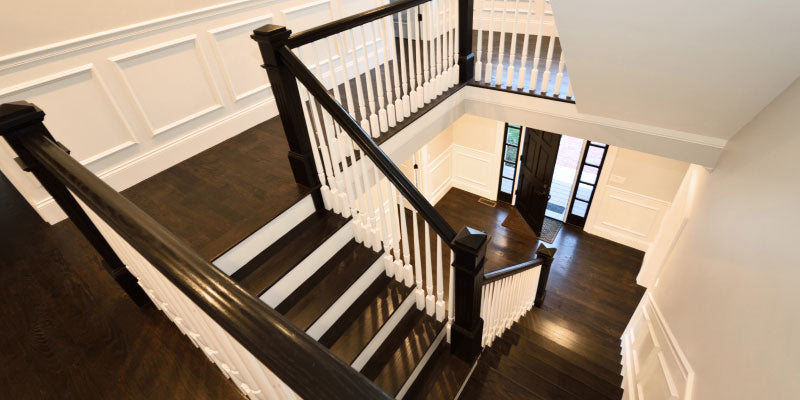
How to Install Vinyl Plank Flooring on Stairs
|
|
Time to read 2 min
|
|
Time to read 2 min
If you’ve installed vinyl flooring in your home, you may want to consider extending it to your stairs. Updating your landing can give your home some more freshness, and matching the stairs to the room they are in keeps your design cohesive. Additionally, many homeowners use vinyl flooring on their stairs as well as elsewhere because it’s easy to install and clean. Before you buy more vinyl pieces for your home, take these items into consideration:
Each of these require a different installation process. Some vinyl has tongues and grooves while others do not. For example, sheet vinyl comes in one large sheet that you lay out and cut as needed. With such variation in vinyl flooring , you may pick the material you’ll use for your stairs based on ease of installation and your project’s requirements.
Many homeowners prefer vinyl tiles for stairs because they are smaller and therefore simpler to lay. However, sheet flooring may be ideal if you need to wrap the vinyl around the edge of the stairs. Consider the look you want for your stairs and the installation process that will be easiest for you when deciding on a type of vinyl flooring.
Furthermore, you can purchase stair treads, or the pieces that go over the edge, made of vinyl. Instead of cutting tiles to cover the front of your stairs, just use the treads.
You probably measured and planned your vinyl flooring layout for other areas of your home, and you should most certainly do so with your stairs. You might even want to draw up to-scale designs to discover the best way to lay your vinyl tiles or planks. Without planning, you may end up with tile slivers oddly stuck at the edge of your stairs. However, by measuring and planning, you can place your tiles in a way that doesn’t leave awkward pieces in the design.
Factor treads into your layout by starting with those and centering them on your stairs. Afterward, you might need to cut more pieces for the rest of the stairs.
No matter where you install vinyl flooring, you should always prepare your space. Make sure the subfloor or underlayment is perfectly level, or the final vinyl product will have bumps. You can use caulking to seal joints and cover screws (which should sit beneath the surface of the underlayment). Additionally, clean the floor thoroughly before you begin installation so no dust or debris is caught under your vinyl flooring.
Many vinyl products come with the adhesive already on the back. All you have to do is peel the protective sheet away and lay down your flooring, per your planned design. Peel and stick vinyl is preferred by many do-it-yourself enthusiasts as it’s quick, clean and easy.
Glue-down vinyl products do not have an adhesive back, so you’ll have to put glue on the substrate first. Spread some down and use a trowel to make sure the ground is evenly coated. Then, your surface will be ready for vinyl installation.
With peel and stick and glue-down vinyl flooring options, you want to press the product to the ground and work out any air bubbles. In the case of sheet vinyl, that may mean starting by the inside of the stair’s L shape (where the vertical and horizontal pieces meet), then working your way outward. If you use tile, you can also start at that spot.